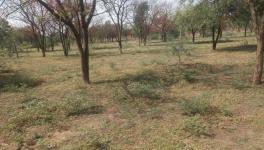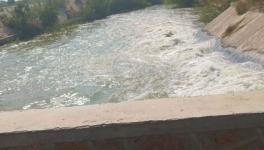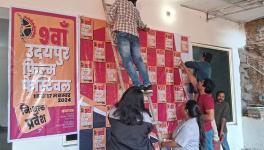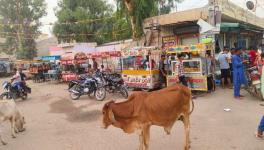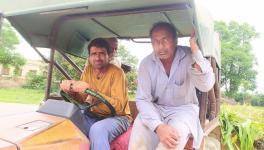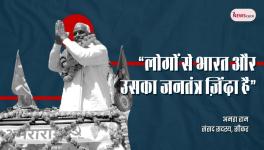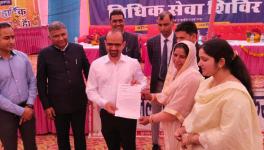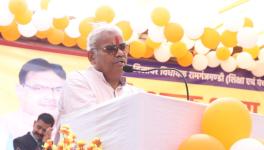Rajasthan’s Tilwara Cattle Fair Hit by Pandemic as Camel Prices Nosedive
Magan Milk Ambassador.
The annual cattle fair at Tilwara in Pachpadra tehsil, located on the banks of River Luni in Barmer district of Rajasthan, was scheduled to be held from April 7 to April 24. This year, however, as the coronavirus cases climbed, the state government abruptly ended the fair on April 16.
The Tilwara fair is among the biggest cattle fairs in the country, with a continuous history of seven centuries. It occurs for a fortnight in March or April each year and its beginning coincides with Chaitra Budi Ekadashi in the local calendar. This year, the camel herders are especially disappointed as many have not managed to sell the animals they expected would find takers at the fair; those who did manage to sell animals found camels did not command over Rs 3,000 each.
Sawai Singh from Pokhran in Rajasthan had travelled to Tilwara, over 100 km away, with some animals from his family’s herd of 145 camels. “Last year, the whole country was lockdown and the fair did not happen at all. This year, it ended abruptly but animals were being sold very cheap. I only got Rs 3,000 each for my young camels. To think, 10 years ago, a camel would sell for up to Rs 50,000 each! Even the year before, we did not hear of prices falling below Rs 8,000 for a camel. I do not understand how we will manage and what the state government is doing.”
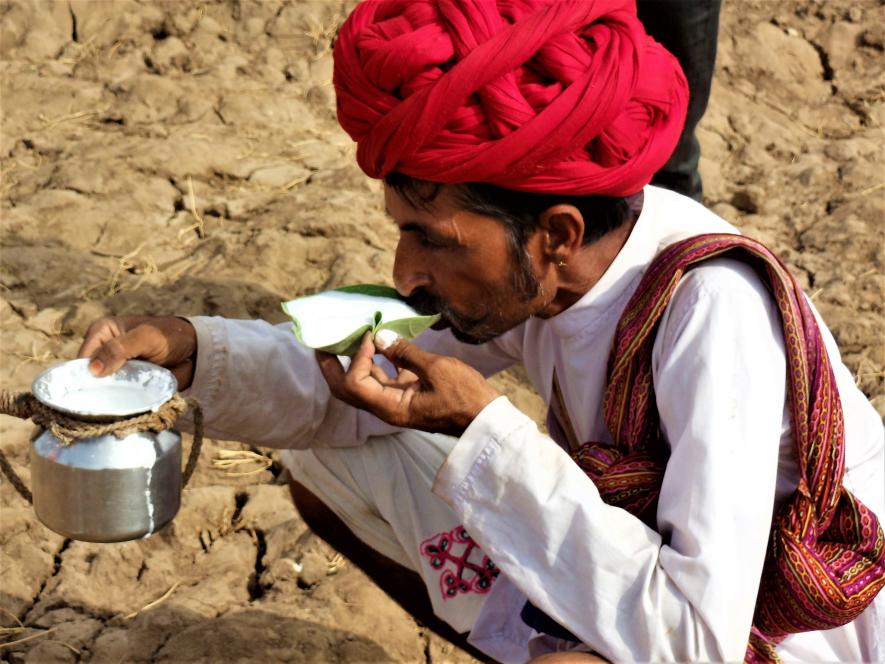
Gamnaram Drinking Traditionally
Sawai Singh is one of six brothers who collectively own the herd of 145 camels. He looked forward with hope to the opening of the camel milk dairy by Urmul Trust in Pokhran.
Nagendra Mathur of Urmul Trust said, “There was some delay in getting permission from the state government because we were not able to upload forms in the online format accurately. That problem has now been resolved and we expect to start operations soon.”
Hanwant Singh Rathore of the Lokhit Pashu Palak Sansthan of Pali district, which has been running a camel milk dairy for some years, said, “In the normal course, camels that are untrained and about three years old would sell for about Rs 8,000 each. Trained camels that can draw carts would be sold for between Rs12-15,000 each. The prices of camels this year has been disappointing.”
At Tilwara, traders would earlier arrive from faraway places like Gujarat and Madhya Pradesh. Camels, horses, goats and donkeys are all traded at the fair.
Also called Mallinath Fair, the site of the cattle trade is close to a temple dedicated to Rawal Mallinath, a 14th century folk hero.
If you travel towards Barmer by road in the days preceding the fair, you will see several trucks plying with animals peering out of them. Camel herders usually arrive on foot, walking long distances with their animals. The animals traded at this fair can only be used for agricultural purposes or milk production, under the law. “There are traders who bought some animals and moved towards Alwar. It is likely that they will cross the state border and go to areas where slaughter is possible,” Rathore said.
Mahendra Singh Tanwar, who heads the Jodhpur unit of Indian National Trust for Art and Cultural Heritage (Intach) and also serves as the keeper of the archives within the Mehrangarh Fort in Jodhpur, says, “During the time of Rajput rulers, the traders who arrived at this spot with their cattle were protected by local kings. The king’s men would accompany the caravans of the traders until the borders of the kingdom and ensure they were not looted.”
Local people believe that the Mallinath Fair began as devotees gathered from across the country at the sacred shrine of Raval Mallinath – the pilgrims would arrive with their animals, and then trade them near the shrine.
Digvijay Singh, a lawyer in Jodhpur, remembers that his grandmother would say that the water in the Luni riverbed was never completely dry. The Luni, a seasonal river, has a good flow right after the monsoon. It flows through Barmer and enters the Rann of Kutch, but then it disappears into the sands and never reaches the sea. However, the riverbed remains fertile even as the flow of water stops in summer. “If you dug just a little near the site of the cattle fair, water would flow,” says Singh.
In recent years, however, Singh has been petitioning the National Green Tribunal against thr rampant pollution in the area. Textile dyeing units near the river have long emptied their waste water into the river, causing pollution to spike. The chemical dyes give parts of the area near the river a distinct colour. The stink from water treatment plants invades the nostrils even from some distance. The pollution has affected farming as well.
Camels are no longer useful as means of transport in this region, with vehicles more easily available. The herders would earlier be welcome on farms all along their pastoral route, as the manure from the animals would help improve soil quality; with more irrigation facilities, fields are fallow for lesser time, and farmers no longer depend on manure from animals.
Camel herders heed traditional taboos – the animals are never slaughtered and their meat is not eaten; for centuries, the milk was distributed free and never sold; it is usually consumed locally without processing – camel milk is hard to curdle.
Till 1991, it was estimated that there were over 10 lakh camels in the country, with nearly 80% of them in Rajasthan alone. Ever since, there has been a sharp decline in the camel population, with the latest cattle census (results were declared in 2019) recording camel numbers at 2.5 lakh, a decrease of over 37% from the previous census. The cattle census in India has been undertaken once every five years since 1919; in 2019, it was undertaken after a six-year gap. To support herders, the state government of Rajasthan introduced a scheme to offer herders monetary support on the birth of camel calves.
The Border Security Force (BSF) that patrols the international border with Pakistan in Rajasthan and Gujarat has a camel contingent, and BSF too buys camels from herders. In recent years, with the shrinkage in the camel population, even the number of camels in the contingent has dwindled.
Although the camel population in India has been shrinking, globally, with increased desertification, the population of this animal uniquely adapted to the desert has been rising steadily, at a 2% annual rate of increase.
Camels, herded by nomadic pastoralists called Raika in Rajasthan, eat a diet of at least 35 different plants – this variety in their diet is seen as the reason their milk has medicinal properties. In recent years, doctors have recommended camel milk for children with autism. In January this year, researchers from Iran and Pakistan showed that camel milk, which is considered good for diabetes and has anti-inflammatory potential, may be effective in containing the novel coronavirus too. China saw a huge spike demand for camel milk since the pandemic began.
Although camel milk was consumed among communities of herders, it had not entered the market and become a commodity to be sold till even 20 years ago in India.
A 19-year-old camel herder who sold milk that was diluted with water was hauled up by a food inspector in 1978. When the matter was taken to court it was argued that standards for the milk of other animals could not be applied to camel milk. The Rajasthan High Court ruled that camel milk could not be sold for human consumption. This was then challenged in the Supreme Court, which in November 2000 called on the government to prescribe standards for the sale of camel milk.
The Food Safety and Standards Authority of India introduced standards for camel milk only in 2016 – and it was found that most camels do not produce milk that met those standards. While FSSAI sought fat content in milk of 3%, fat in camel milk can vary from 1.9% to 4%. In 2017, the FSSAI standards were revised and fat content was set at 2%.
Urmul Trust in Bikaner and the Kumbhalgarh Camel Dairy in Pali district of Rajasthan now sell camel milk. Amul too has been selling camel milk since 2019.
In Pali district, a programme is currently underway to feed a regular diet of camel milk to patients suffering from tuberculosis. “We received a grant to supply the milk, but have not yet managed to hire researchers to estimate the difference the diet makes to patients,” says researcher Ilse Kohler Rollefson, author of Camel Karma, who has worked among the Raikas of Rajasthan for over 20 years.
Get the latest reports & analysis with people's perspective on Protests, movements & deep analytical videos, discussions of the current affairs in your Telegram app. Subscribe to NewsClick's Telegram channel & get Real-Time updates on stories, as they get published on our website.










